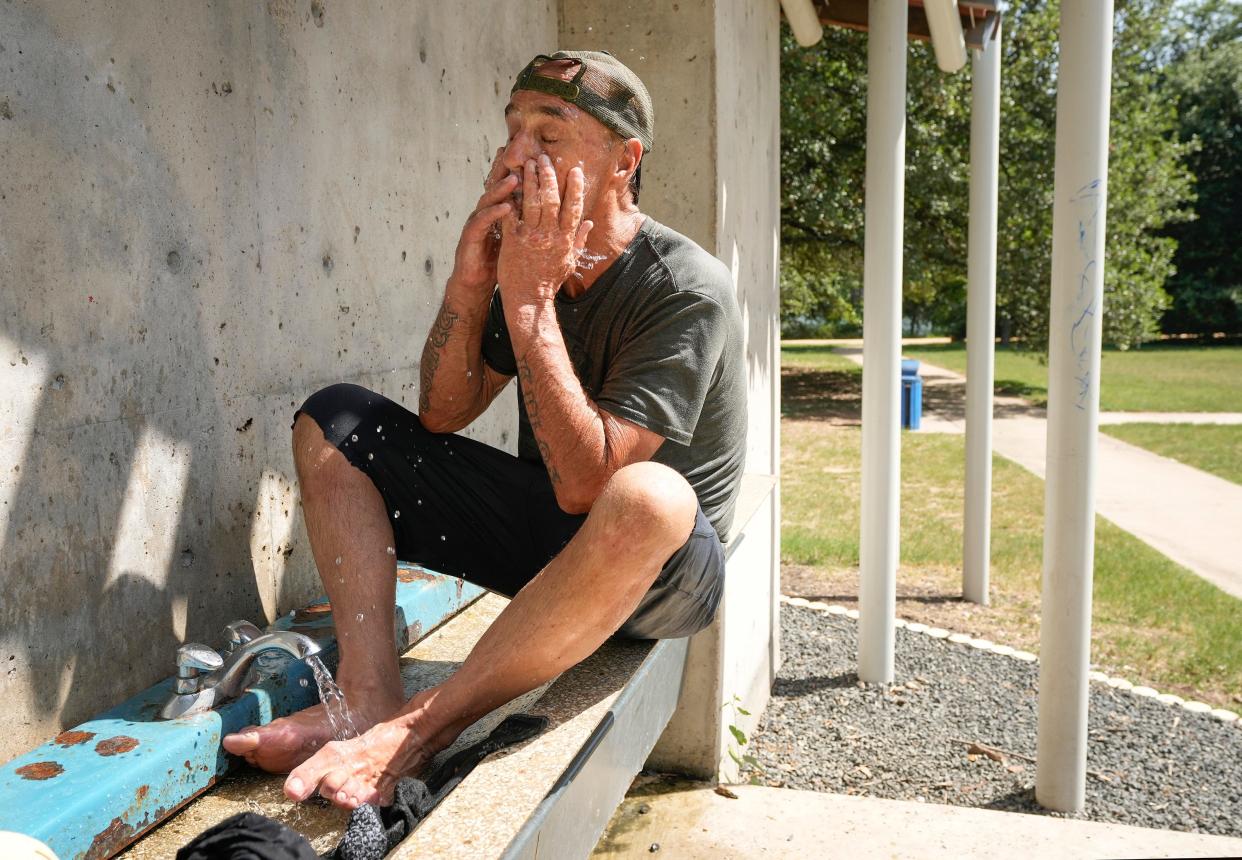Austin could hit 100's for 6 days straight this week

Shortly after Austin's first 100 degree day of the year on Thursday, the city could see nearly a week straight of triple digits.
Highs reached 100 again on Sunday and Monday, according to data from the National Weather Service. Now the service is forecasting four more days of 100-plus temperatures through Friday.
From this year's first triple digits to the last time Austin saw 100-degree temperatures on Sept 24, 2023, 277 days passed, according to data from the National Weather Service.
The service's Climate Prediction Center is forecasting a hotter than average summer for Central Texas this season. Higher overall temperatures are a function of global warming trends due to climate change.
Texas scientists warn this is just the beginning.
Hotter summers due to climate change
The average number of Texas’ triple digit days has increased threefold since the 1970s, a new report from Texas A&M’s University's climatologist, John Nielsen-Gammon, found.
Gammon created the report in coordination with Texas 2036, a nonprofit dedicated to improving the state with an eye on its 200th birthday in 2036.
By that year, Austin could see an average of 30 days of 100-plus temperatures in a typical July, according to Kerry Cook, a climate scientist from the University of Texas.
“We're looking at warming trends due to increasing atmospheric greenhouse gasses, definitely and incontrovertibly,” Cook said.
Cooling, low-pressure weather fronts once brought periodic reprieves from Austin’s summer heat. But local meteorologists, like the weather service's Monte Oaks, said that’s not happening anymore.
“The biggest problem right now is we’re not getting enough breaks,” he said.
Heat-related illness is on the rise
The number of heat-related illnesses this year have obliterated numbers from 2023 — Austin’s hottest summer in 126 years of recorded history.
Austin-Travis County Emergency Medical Services responded to 125 cases of heat-related illness in May, according to data provided by the agency. That’s a 150% increase from the 50 cases it saw in May 2023.
Starting on Monday, June 24, the agency responded to nearly 30 heat-related illnesses in just two days, according to a post on the agency’s X account.
Hospital visits for heat-related illness also have blown last year’s figures out of the water.
Austin-area emergency rooms saw 123 heat-related illness visits last month — a dramatic increase from just 48 during the same time frame last year, said Ken Snipes, Austin’s director for Homeland Security and Emergency Management.
When high temperatures and humidity combine to produce heat indexes above 105, illnesses like heat cramps, heat exhaustion and heat stroke become a salient threat.
Staying safe in the heat
To avoid heat-related illness, the National Weather Service suggests hydrating and staying indoors. If you must be outside, try to limit exposure by avoiding direct sun and taking frequent breaks for water and rest.
Heat-related illness comes in three stages:
Heat cramps are the first sign: painful spasms in the arms and legs, accompanied by profuse sweating. If untreated, they can lead to heat exhaustion.
Heat exhaustion is serious. Symptoms can include dizziness, low blood pressure, cold skin, and a weak and rapid pulse. If heat exhaustion is left untreated, it can evolve into heat stroke.
Heat stroke can be fatal. Signs include dry skin, loss of consciousness and seizures.
Prevention is the best policy for heat-related illness. Heat cramps and heat exhaustion are non-life-threatening and best treated with hydration and rest in an air-conditioned space.
If you think someone near you is suffering from heat stroke, call 911 and begin cooling them down with wet towels and ice.
As temperatures rise, the weather service recommends checking on loved-ones, friends and neighbors.
This article originally appeared on Austin American-Statesman: Austin could hit 100-plus temps for 6 days straight this week

